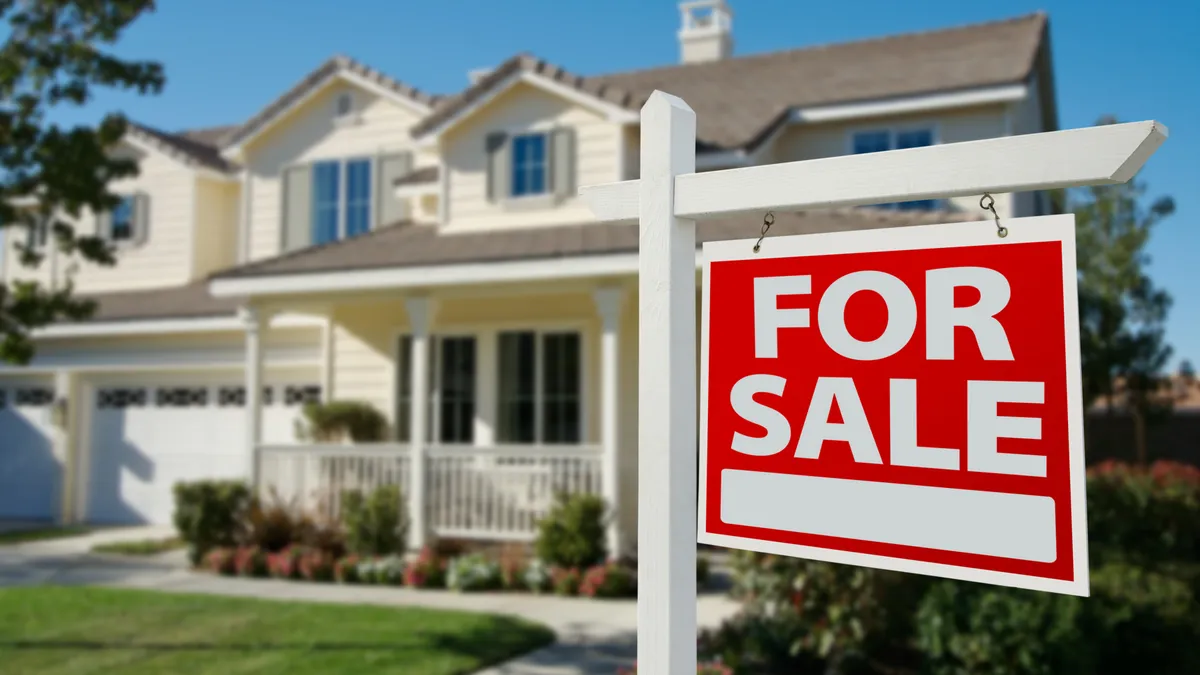Dive Brief:
-
Existing-home sales rose 4.4% in March to a seasonally adjusted annual rate of 5.71 million from a downward-revised rate of 5.47 million in February, according to the National Association of Realtors. The rate represents the fastest pace in more than a decade.
-
Sales in the category — which includes single-family homes, townhomes, condominiums and co-ops — were 5.9% ahead of the year-earlier period in March.
-
The median existing-home sales price in March was $236,400, up 6.8% from a year ago and representing the 61st month in a row of year-over-year increases. Inventory levels declined for the 22nd-consecutive month, with a 3.8-month supply of unsold properties.
Dive Insight:
Existing-home sales activity turned up in March due in part to strong consumer confidence, according to NAR Chief Economist Lawrence Yun. Despite a dearth of inventory, what listings were on the market served demand to lead to strong sales for the month. Still, until housing supply increases significantly, the price increases that have defined the last few years will continue and will likely keep outpacing income growth.
However, other recent reports suggest that consumer confidence in housing on the decline. Following February's record high, Fannie Mae's monthly Home Purchase Sentiment Index fell 3.8 percentage points in March. The share of respondents who said now is a good time to buy a home dropped by 10 percentage points in February, while that of respondents who said now is a good time to sell rose by 9 percentage points.
That consumer outlook diverges from the resurgence in builder optimism around the market's potential, which in March reached its highest level since June 2005. The figure fell slightly in April, however, likely due to pressure from continued shortages of lots and labor and rising material costs.
Such headwinds are proving to be a drag on a significant acceleration in new residential construction activity. Single-family housing starts fell 6.2% from February to March, although they remained up 9.3% from March 2016, indicating recovery in that critical market segment will be slow. Single-family permits were down 1.1% for the month and up 13.5% for the year.
Arrested growth in residential construction activity has also dampened employment growth, with residential payrolls shedding 7,600 positions in March, according to data from the Bureau of Labor Statistics.













